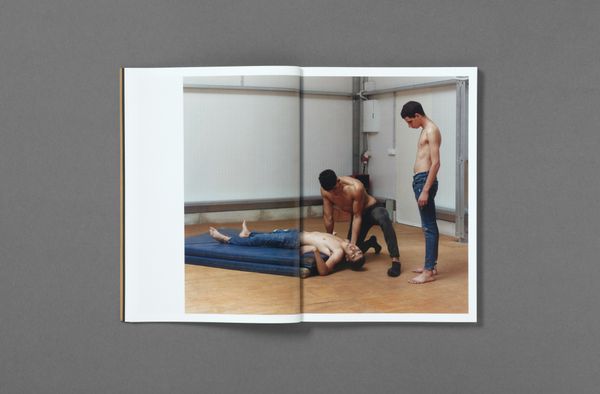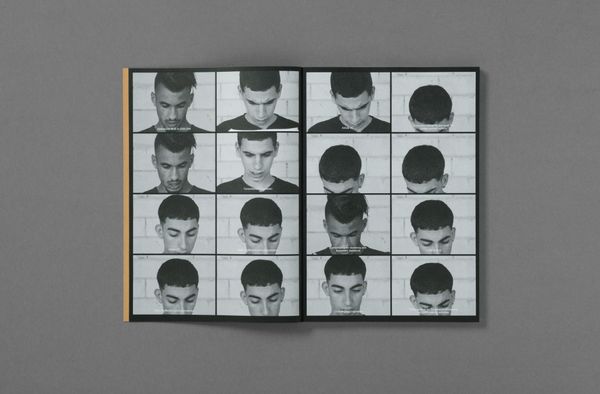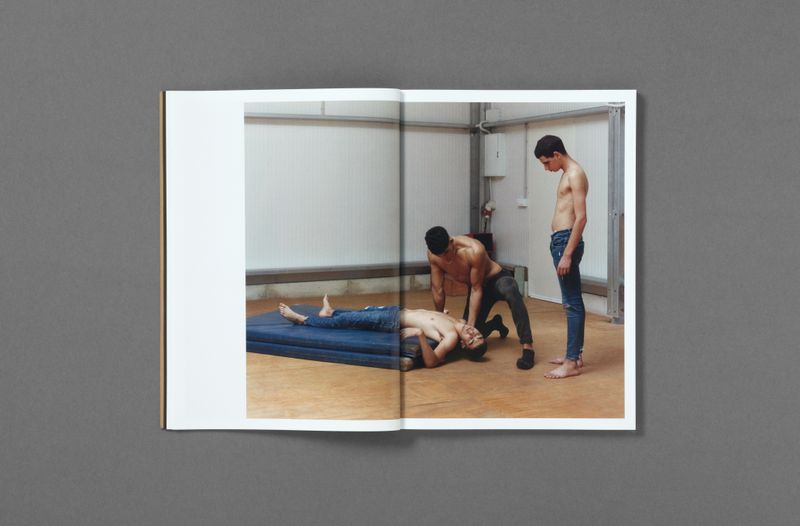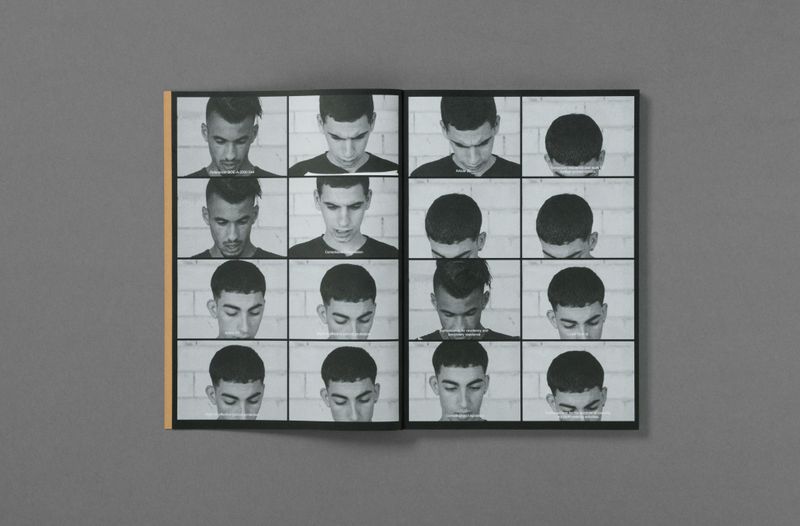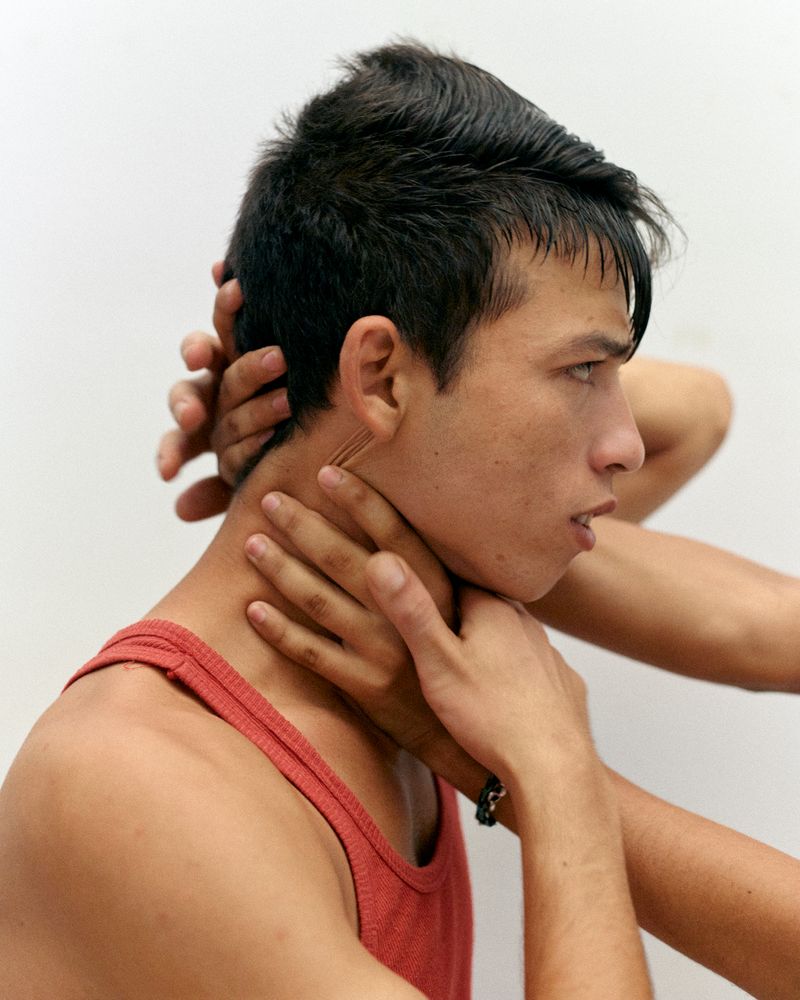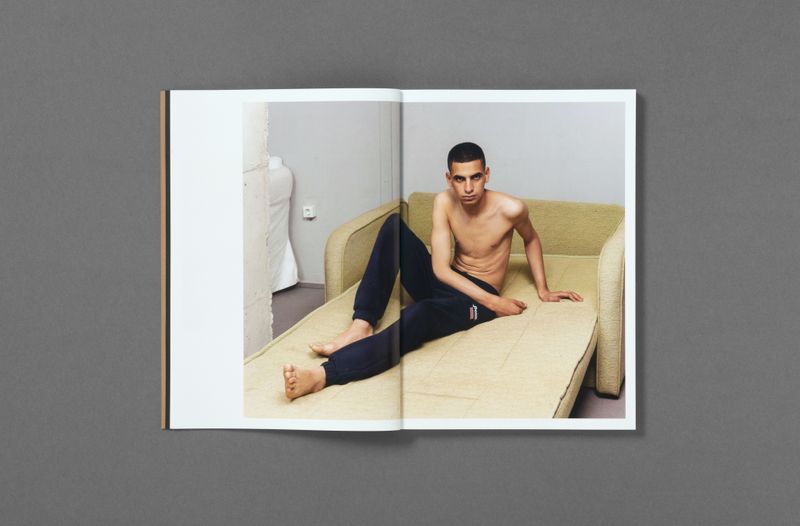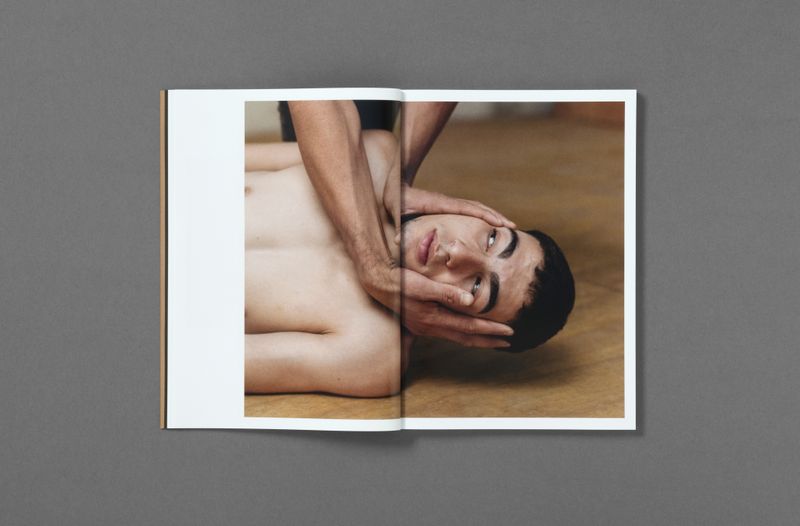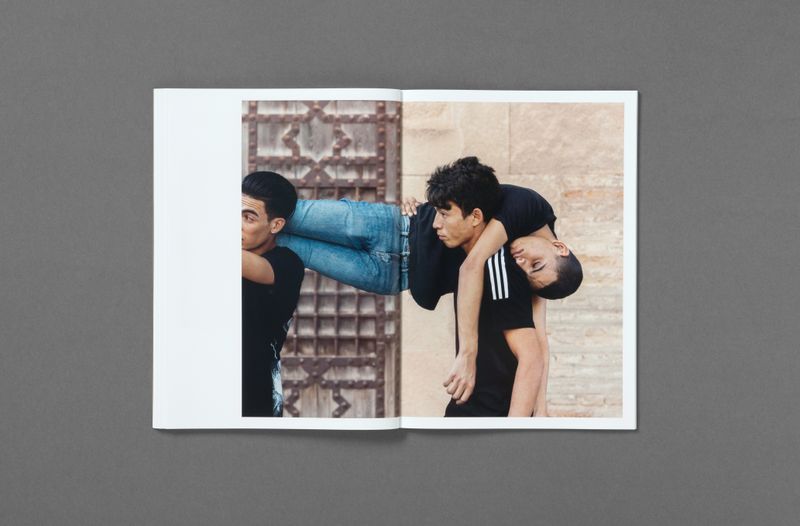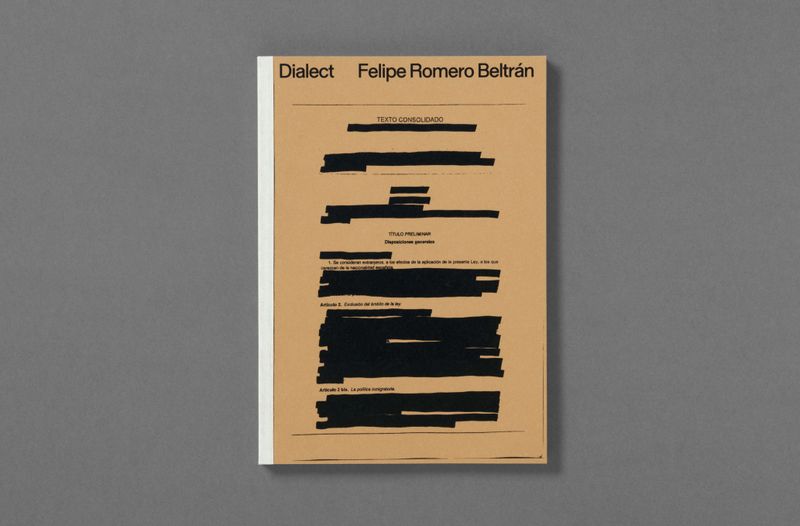Photobook Review: Dialect by Felipe Romero Beltrán
-
Published22 Jun 2023
-
Author
How can the embodied, violent power of a legal document be materialized? Observing three years of forced waiting as lived by a group of Moroccan migrants, "Dialect" is a book subverting bureaucracy while slipping through the nets of its codified language.
Three young men read a text. Their eyes and mouths follow the words, focused. They contort, as they stumble upon vocabulary whose sound is hard to pronounce and whose meaning escapes comprehension. The alienation of words goes through, and modifies, their bodies.
The A4 sheets of paper in their hands report a legal, impossible text. It is the one holding nine young, Moroccan migrants in a state of perpetual waiting: as they illegally reached Spain when still underage, their state of adults cannot be verified, therefore, their custody lays in the hands of the Spanish state. The announcement of this bureaucratic limbo is the starting point of Felipe Romero Beltrán’s three-year work, as well as the beginning of his monograph Dialect, published this April by Loose Joints.
The document’s central role is announced since the cover. There, words are unreadable blocks of black ink. The first page of the book, then, corresponds to the document’s index. Right after, a video sequence reports Recital, Beltrán’s piece showing the migrants’ attempt at reading bureaucracy. From there on, the document’s words will no longer find space in the book. As papers get out of sight, the evidence of them will though emerge as a physical force. The document is a pair of hands at your neck. It is a bunk bed, and the plastic chair on which you get a haircut. It’s the pressure pushing your head against the floor. It’s the invisible thread that keeps you hanging.
Way beyond the reach of sterile, absurd bureaucratic jargon is Felipe Romero Beltrán’s photography. The language he developed stands somewhere in between traditional documentary portraiture, choreography, staged photography and performance. “The question of the body is a central issue in my work”, Beltrán says. “The different tools I used were attempts to answer the core question of the case, which is torn between a law that precisely (and exhaustively) categorizes what, in the end, is supposed to be a foreign body in Spain and its experiential face: the everyday life of this group in Seville”.
Throughout the pages, the presence of the migrants’ bodies is indeed somewhat obsessive. The tension of their muscles, the scratches and cuts on their skin, the precision of their choreographic gestures become photographic tools to articulate a discourse and make a point: a document is way more than a document, waiting and deliberate suspension are violence.
Waiting is a subject to the work as much as a method. “The project started without the intention of being a body of work”, Beltrán tells me. “As the months went by, I realized what was happening with those pictures, and I decided to implement some rules to play by: a frequency, a type of approach, a certain time. The latter was fundamental for the project: waiting 3 years to claim residency in Spain, under this condition the project already had a beginning and an end”.
Divided in three main sequences, Dialect is structured as the progressive liberation from this limbo. Everything starts indoors: anonymous and empty, the rooms inhabited by the migrants resemble more a backdrop than real, lived space - it’s the plain walls and floors of a perpetual vestibule. In chapter three, outside space starts to enter the frame. Sunlight hits the skin of bodies before only shown in neon light. A promising future starts to seem possible. Though, the weight of waiting keeps hunting the frame. We find ourselves asking: how pervasive are the consequence of what they’ve lived through?
Symmetrical to the Recital video sequence, towards the end of the book we now encounter Instruction, a choreographical piece by Lucia You and migrant Bilal Siasse that re-enacts the physical motion of illegally crossing the sea. Last, six written contributions comment on the migrants’ status - there are texts by two of the migrants themselves, a physicist, an anthropologist, a philosopher, again expanding the reach of the piece of paper everything started with.
“Images cannot be subordinate to words, and in that sense, working from non-verbal fields is important in my process”, says Beltrán to comment on the non-linearity of his path towards this project, a journey he describes as “chaotic and messy”. Though, I immediately link his words to the instead very linear, straightforward operation Dialect is: the expansion of a verbal reality towards a truth that is plastic, visual, and in motion. Non-verbal, though somehow more eloquent.
Dialect might look like a stack of documents, and weigh like one. Throughout the volume, the limits of bureaucratic language are stretched from the inside. Something larger and deeper, way more similar to reality, infiltrates its pages - something that is now quite hard to get rid of.
Dialect is published by Loose Joints1
76 pages, 21 x 30 cm, 70 colour plates
Section-sewn open spine softcover
With texts in English and Spanish by Caterina Borelli, Albert Corbí, Youssef Elhafidi, Zakaria Mourachid and Ricardo Quesada
Edited by Loose Joints Studio & Felipe Romero Beltrán
Designed and Published by Loose Joints Studio
LJ183, April 2023 ISBN 978-1-912719-37-2
--------------
All photos © Felipe Romero Beltrán
--------------
Felipe Romero Beltrán (b. 1992) is a Colombian photographer based in Madrid, Spain. Beltrán focuses on social issues, dealing with the tension that new narratives introduce in the field of documentary photography. His practice, characterized by its interest in social matters, is the result of long-term projects accompanied by extensive research on the subject. Beltrán is currently completing a PhD in photography at the Complutense University of Madrid. His series Dialect is the winner of the 2022 Aperture Portfolio Prize.
Camilla Marrese (b.1998) is a photographer and designer based between Italy and The Netherlands, graduated from MA Information Design at Design Academy Eindhoven (NL). Her practice intersects documentary photography, design for publishing and writing, aiming for the expression and visual articulation of complex issues.
